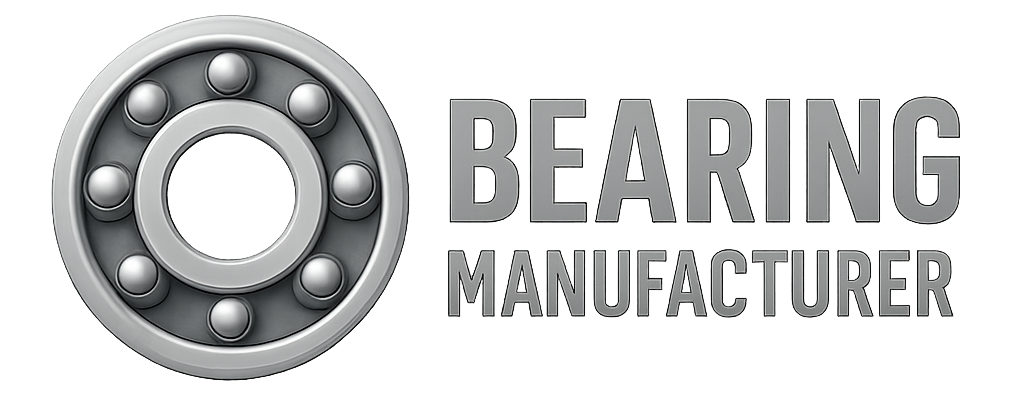A one way bearing is a specialized type of needle roller bearing featuring a drawn cup design with needle roller clutches, characterized by their low radial section height.
These one way needle bearings allow shafts to rotate freely in one direction while restricting motion in the opposite direction. This unidirectional behavior is made possible by a mechanism in which the needles roll smoothly during forward rotation but wedge and lock under reverse motion, enabling reliable and efficient torque transmission.
What Is a One Way Bearing?
A one way bearing is a type of needle roller clutch designed to permit shaft rotation in one direction only. When the shaft rotates in the allowed direction, the bearing spins freely; when reversed, it locks up and transmits torque.
This unique behavior makes it ideal for systems that require controlled movement or torque transfer, such as indexing mechanisms, backstopping devices, and overrunning clutches.
Alternative Names for One Way Bearings
One way bearings are commonly referred to by several names depending on their design or application, including:
-
One way clutch
-
Sprag clutch bearing
-
Roller clutch
-
One way needle bearing
-
Overrunning clutch
-
Freewheel bearing
Design and Construction of One Way Bearings
Needle Roller Clutches
At the core of most one way bearings is a needle roller clutch, typically constructed with the following parts:
-
Drawn cup (thin-walled outer ring)
-
Needle rollers
-
Cage and springs
-
Retaining or biasing mechanism
The drawn cup is often made of carburized steel for enhanced wear resistance. Inside, the needle rollers or sprags engage when the shaft reverses direction, locking the inner and outer races together and transmitting torque.
Types of One Way Bearings
-
Single-Row One Way Bearings: These one way bearings do not support loads from any direction and should be used with needle-roller bearings to support radial loads.
-
Triple-Row One Way Bearings: These integrate both unidirectional motion and radial load support, making them more versatile for combined-function applications.
Common Materials
-
Stainless Steel: Corrosion-resistant and durable; ideal for marine, food-grade, or chemical environments.
-
Carburized Steel: High hardness and surface wear resistance; used in rollers and raceways.
-
Plastic Springs or Retainers: Lightweight, low-friction solutions for cost-efficient or weight-sensitive designs.
How Does a One Way Bearing Work?
Operating Principle
One way bearings function through directional locking. They consist of:
-
Inner and Outer Races: One connects to the shaft; the other to the housing.
-
Sprags or Rollers: Tilt or wedge to lock rotation in one direction and disengage in the other.
-
Spring or Retainer: Ensures precise positioning of the rollers/sprags.
Motion Modes
-
Freewheeling (Overrunning): Shaft rotates freely without torque transfer in one direction.
-
Locking: Rotation in the opposite direction causes rollers or sprags to lock, allowing torque transmission.
Advantages of One Way Bearings
-
Efficient Torque Transfer: Transmits torque quickly and reliably upon locking.
-
Minimal Backlash: Smooth transition between free and locked states.
-
Compact & Lightweight: Especially valuable in high-speed, space-constrained designs.
-
High Durability: Can perform across a wide temperature range and resist wear.
-
Low Maintenance: Requires simple lubrication and inspection under proper use.
Common Applications of One Way Bearings
One way bearings are used across many industries due to their versatility and reliability:
-
Office Equipment: Paper feed systems in printers, copiers, and dispensers.
-
Fitness Machines: Flywheel and pedal systems that allow unidirectional movement.
-
Automotive Systems: Starter motors, gearboxes, and transmission indexing systems.
-
Recreational Gear: Fishing reels, RC car differentials, drones, and hobby engines.
-
Packaging Machinery: Ensures smooth indexing and product handling.
Installation and Maintenance Guidelines
Installation
-
Press Fit: Most drawn-cup one way bearings are installed using a simple press fit into the housing.
-
Alignment: Correct alignment ensures optimal raceway geometry and performance.
Maintenance Tips
-
Use proper lubrication (oil preferred above 70°C).
-
Avoid contamination from dust or moisture.
-
Inspect for wear or deformation regularly.
-
Replace worn parts promptly to prevent system failure.
-
Keep records for predictive maintenance planning.
Special Considerations
-
Temperature Range: Most one way bearings operate effectively between -30°C and 120°C.
-
Customization Options: Bearings can be customized using different materials, dimensions, or internal designs to meet unique performance requirements.
